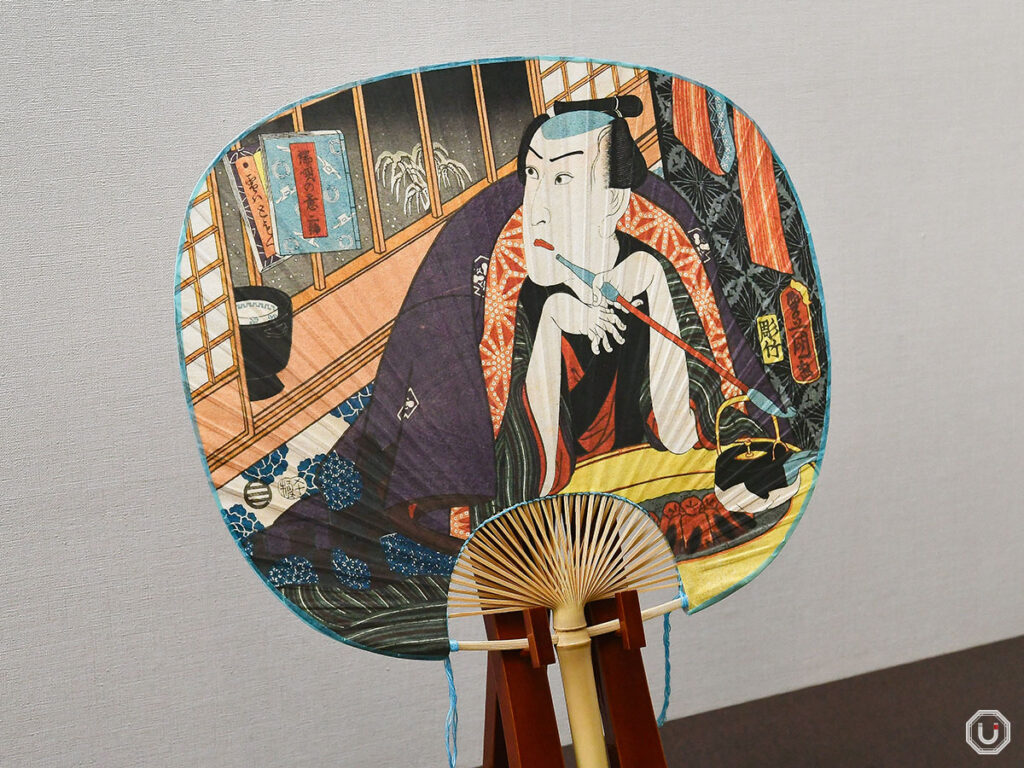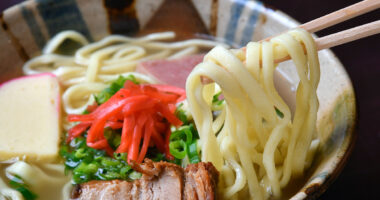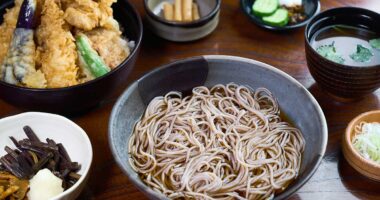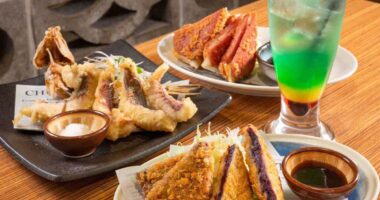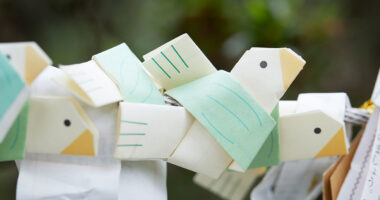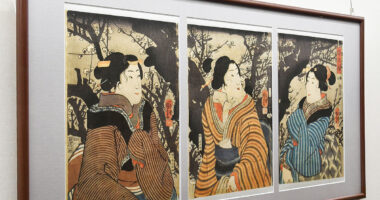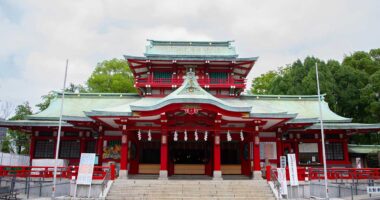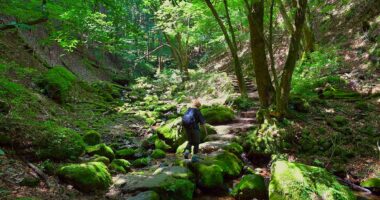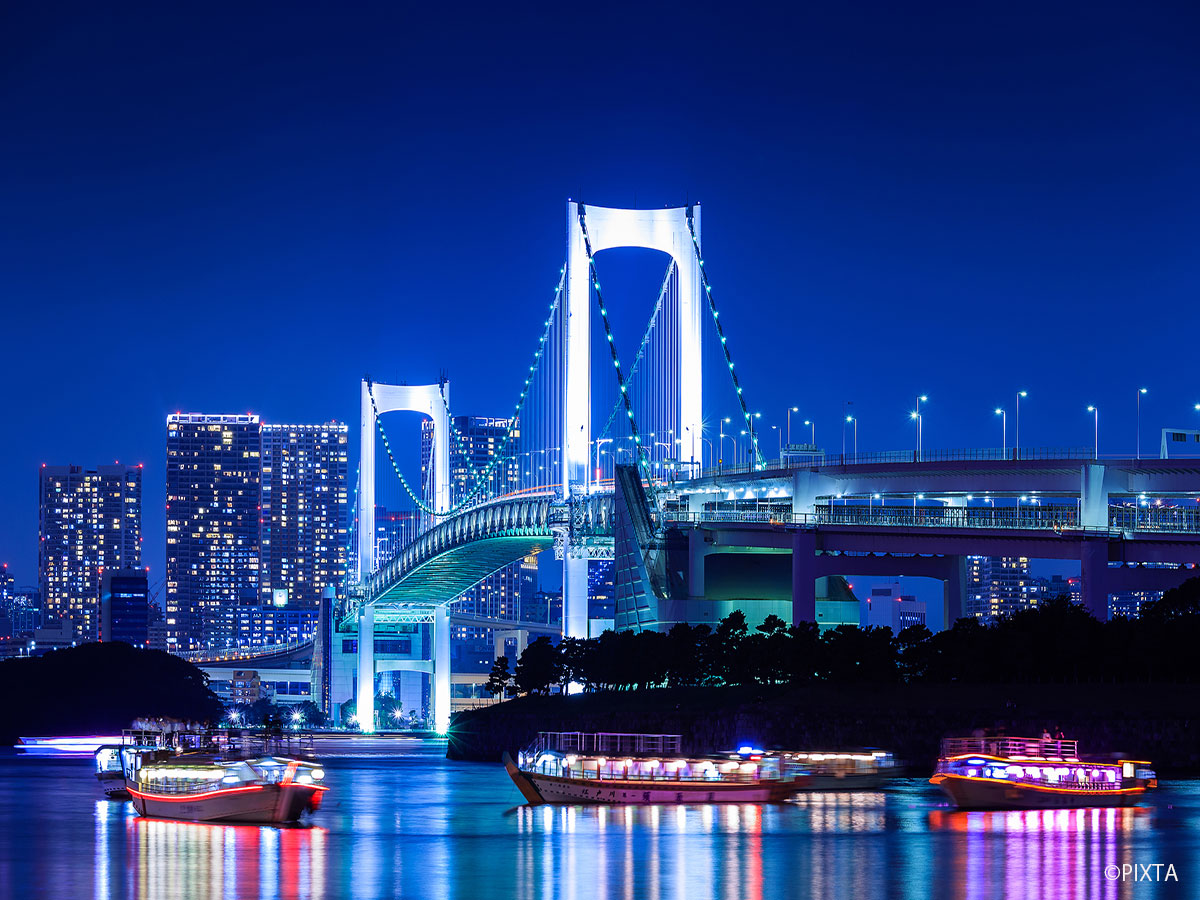Ukiyo-e, traditional Japanese woodblock prints that vividly depict the daily lives and customs of Edo-period commoners, have today established themselves as highly regarded art worldwide.
However, at the time, ukiyo-e circulated as publications, functioning as everyday items and becoming a familiar and beloved presence in the lives of Edo residents.
From a medium rooted in ordinary life to an art form attracting global attention, ukiyo-e’s deep charm can be experienced at the Ibasen Ukiyo-e Museum in Nihonbashi, Tokyo.
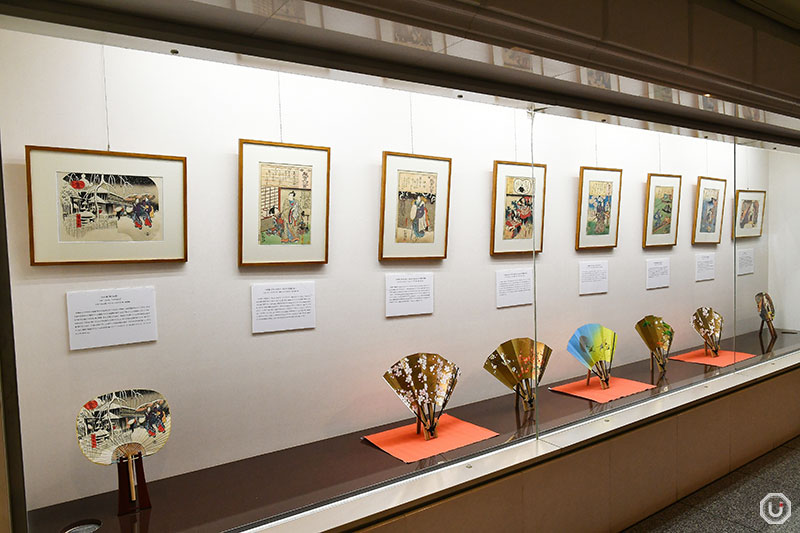
Interior of Ibasen Ukiyo-e Museum
An ukiyo-e museum run by a long-established traditional Japanese fan maker
The museum is run by Ibasen, Japan’s oldest specialist store for sensu (traditional folding fans) and uchiwa (handheld fans), founded in 1590.
Originally, the company started as a wholesaler handling washi paper and bamboo, supplying materials for baskets and containers.
Today, Ibasen maintains a shop in Nihonbashi, Tokyo, carrying forward more than 400 years of Japanese tradition.
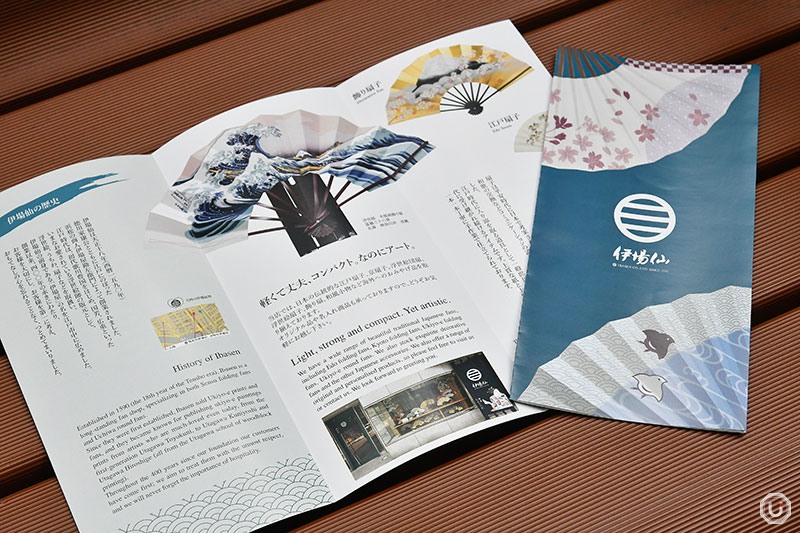
Pamphlet describing the history of Ibasen, with English translation
Since its founding, Ibasen has been closely connected to Japanese life and culture through its handling of traditional washi paper and bamboo.
During the Edo period (1603 to 1868), ukiyo-e was widely used in the designs of folding fans and uchiwa fans, and Ibasen played an important role in supporting this culture.
In modern times, Ibasen has carried this legacy forward by establishing the Ibasen Ukiyo-e Museum, where visitors can enjoy its collection of ukiyo-e and experience Japan’s sense of beauty and history.
The museum is located in an office district, about a five-minute walk from Mitsukoshimae Station.
On the first floor you’ll find the Ibasen shop, and just beside it—down a small passageway—is the museum entrance. There, visitors are greeted by glass display cases filled with a variety of ukiyo-e prints.
Admission is completely free, making it accessible to anyone.
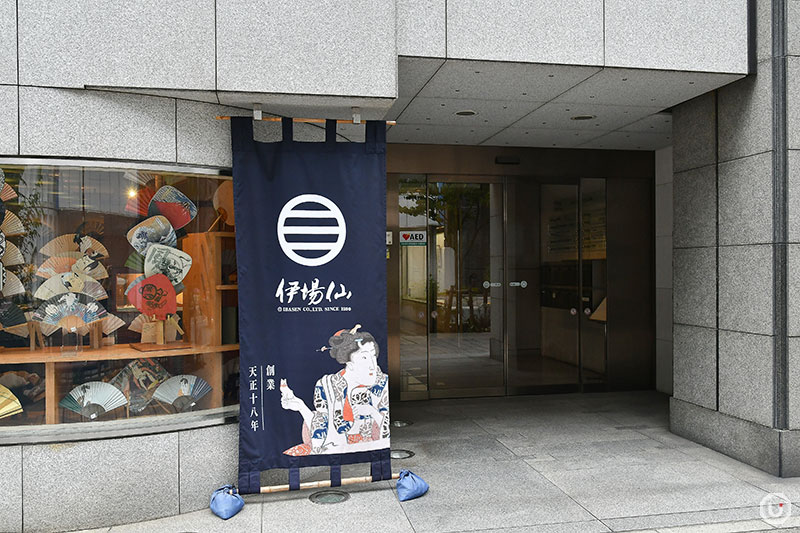
Exterior of the Ibasen Ukiyo-e Museum
Carrying the mission of “passing down ukiyo-e culture”
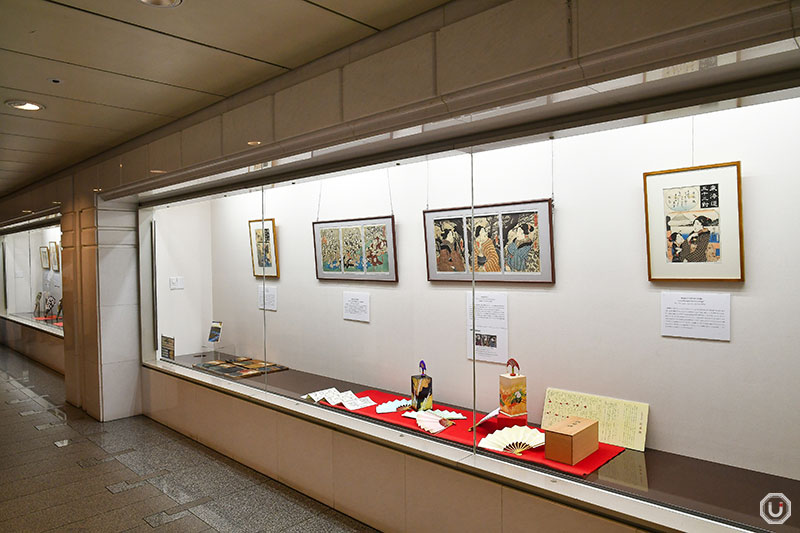
The Ibasen Ukiyo-e Museum holds regular rotating exhibitions
There are many different genres within ukiyo-e, including bijinga (pictures of beautiful women), yakusha-e (actor portraits), and fūkeiga (landscapes).
Bijinga and yakusha-e were, in a sense, the equivalent of modern-day photo cards or pin-ups. Prints depicting famous kabuki actors or beautiful women were immensely popular among the people of Edo, and when pasted onto folding fans or handheld fans, they sold rapidly.
In fact, Ibasen originally began producing ukiyo-e for the very purpose of boosting sales of their fans.
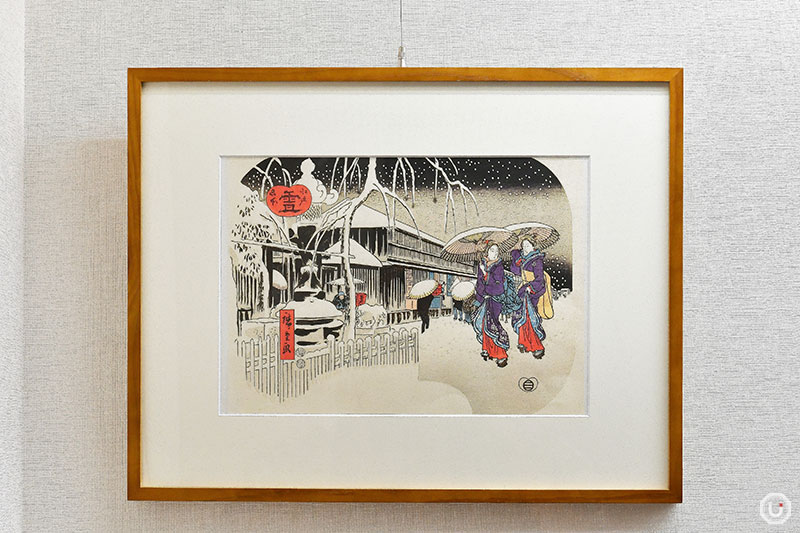
Uchiwa prints are called uchiwa-e, and fan prints are called ōgi-e.
By the 18th century, Ibasen is said to have started printing ukiyo-e specifically for fans and uchiwa. By the 19th century, ukiyo-e began to be produced and sold independently of fans and uchiwa, becoming standalone artworks.
Through this process, Ibasen also took on the role of a hanmoto, or publisher-producer, managing the production and distribution of ukiyo-e.
The company developed close connections with famous ukiyo-e artists, including Katsushika Hokusai, Utagawa Hiroshige, and Utagawa Toyokuni.
Against this historical backdrop, the Ibasen Ukiyo-e Museum introduces ukiyo-e from the Edo period and their cultural context, playing a role in passing this tradition to future generations.
Ukiyo-e as everyday entertainment for Edo commoners
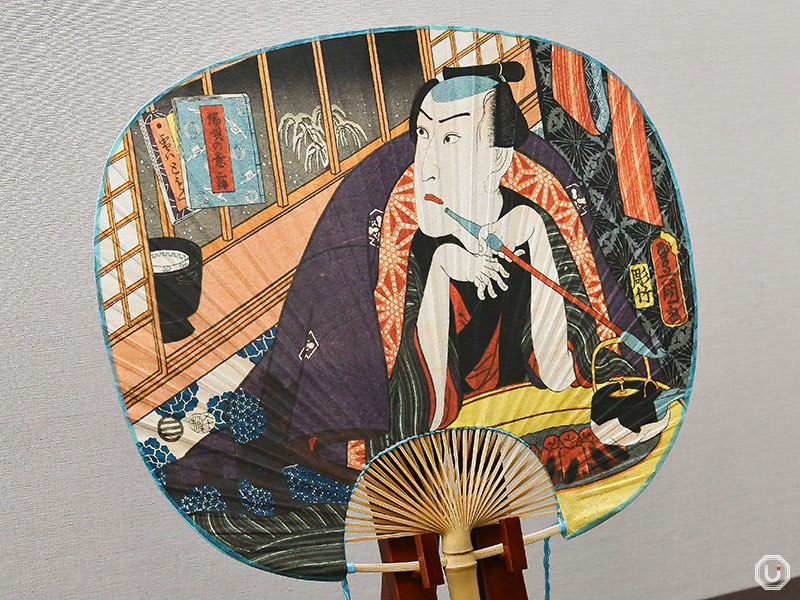
“Utagawa Toyokuni, Uchiwa-e: Anonymous”
This piece by Utagawa Toyokuni, Uchiwa-e: Anonymous, at first glance depicts a kabuki actor quietly looking outside while wearing a haori coat. No specific name is indicated, and the composition is modest.
However, Edo residents of the time would study the patterns on the haori coat, recognize the actor’s family crest, and identify who was depicted.
Moreover, some could infer from the casually draped women’s obi (kimono sashes) on the right side of the image that the actor was secretly visiting a woman.
In other words, while appearing as a landscape or portrait, it acted like a gossip column in a weekly magazine, portraying the actors’ secret lives off-stage. Deciphering these subtle hints and enjoying the actor-related rumors was part of the ukiyo-e experience.
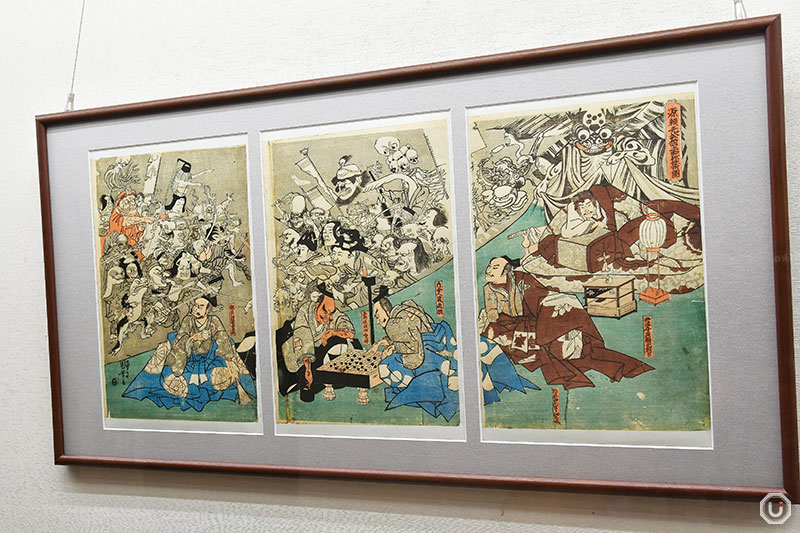
Utagawa Kuniyoshi, “Yokai (Specters) by Tsuchigumo, the official residence of Minamoto no Yorimitsu”
This piece, also by Utagawa Kuniyoshi during the Tenpō era (1831-1845), is “Minamoto no Yorimitsu-kō no Yakata Tsuchigumo Yōkai wo Nasu Zu.” It is translated by the museum as “Yokai (Specters) by Tsuchigumo, the official residence of Minamoto no Yorimitsu” (meaning the Earth Spider generated yokai to torment Lord Minamoto no Yorimitsu).
At first glance, it appears to depict a scene from the well-known kabuki and Noh play “Tsuchigumo” (“The Earth Spider”). However, hidden within the image is a detail that Edo-period viewers would have immediately recognized.
The crest on the haori worn by the second warrior from the right belongs to Mizuno Tadakuni, a rōjū (senior councilor) of the Tokugawa shogunate.
Once viewers noticed this crest, they would have quickly realized that Kuniyoshi’s print was not merely an illustration of a stage drama.
Mizuno was the official who pushed forward the Tenpo Reforms, aimed at shoring up the shogunate’s finances and strengthening its power. Yet his policies placed heavy restrictions on commoners’ daily lives, sparking resentment instead.
In other words, this print was rumored to be a satirical jab at Mizuno’s government, borrowing the guise of the Earth Spider tale.
Seen in this way, the monstrous figures could be interpreted as symbols of the common people of Edo, suffering under the weight of reform.
Thus, ukiyo-e was not only entertainment or fine art, but also a medium through which society could be observed and critiqued from the perspective of the people.
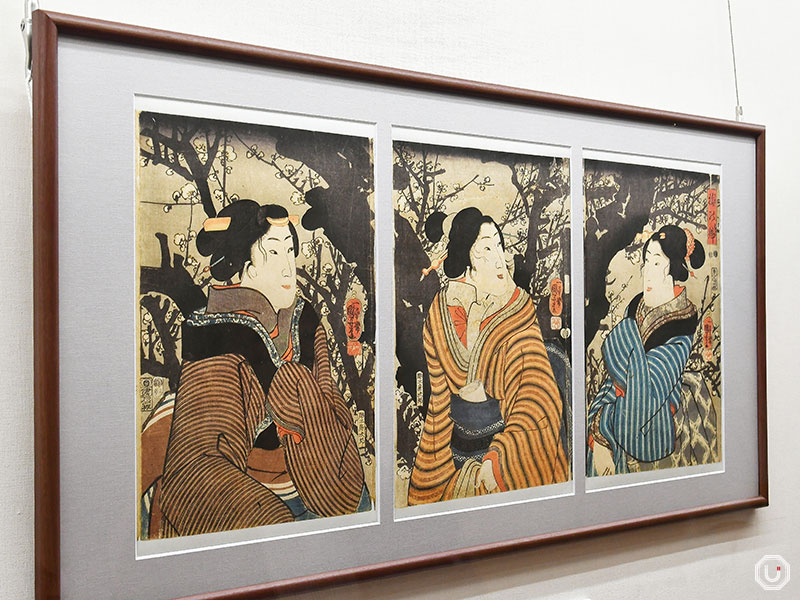
Utagawa Kuniyoshi, “Ume no Sakigake” (The First Blossoms of Spring)
“Ume no Sakigake” is an ukiyo-e print by Utagawa Kuniyoshi that depicts three women, warmly dressed, gathered around a plum tree just beginning to bloom in the still-cold season, eagerly awaiting the arrival of spring.
During the Edo period, young men were the primary buyers of such bijinga.
Because these prints functioned in a way similar to modern-day celebrity photos, many people purchased only the images of women they particularly liked.
For this reason, it is considered rare to see all three prints displayed together, as in the “Ume no Sakigake” exhibition at the Ibasen Ukiyo-e Museum.
“Ume no Sakigake” is also recognized for its cultural value and is part of the collection at the Boston Museum of Fine Arts.
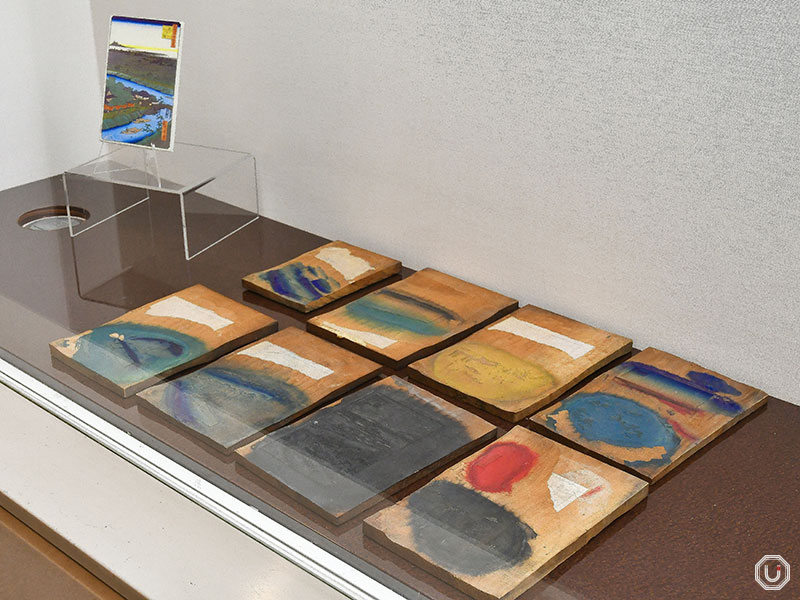
Take a close look at the woodblocks
At the Ibasen Ukiyo-e Museum, visitors can also see the actual woodblocks used to create ukiyo-e prints during the Edo period.
These rare exhibits offer a glimpse into the production process of ukiyo-e, which required multiple woodblocks to print just a single image.
These woodblocks survived both the Great Kanto Earthquake and wartime damage, and the fine carvings—capturing details as delicate as individual strands of hair—showcase the craftsmanship of Edo-era artisans.
The exhibits are rotated four times a year, changing with the seasons. This small museum makes appreciating ukiyo-e even more enjoyable, so be sure to stop by during your sightseeing or shopping trips.
Information
| Facility name | 伊場仙浮世絵ミュージアム Ibasen Ukiyo-e Museum |
|---|---|
| Address | 4-1 Nihonbashi-Kobunachō, Chūō-ku, Tokyo
|
| Access |
Shin-Nihombashi Station 4-minute walk from Exit 5
Mitsukoshimae Station 5-minute walk from Exit A6
Kodemmachō Station 6-minute walk from Exit 3
|
| Phone number | 03-3664-9261 |
| Hours | 10:00-18:00 |
| Closed | Sunday and national holidays |
| Admission | Free |
| Official website | https://www.ibasen.co.jp/pages/gallery |
| Pamphlets | Available with Japanese and English language ※only the museum’s overview brochure |
| Exhibit audio guides | None |
※All museum information in this article is accurate as of August 2025.
